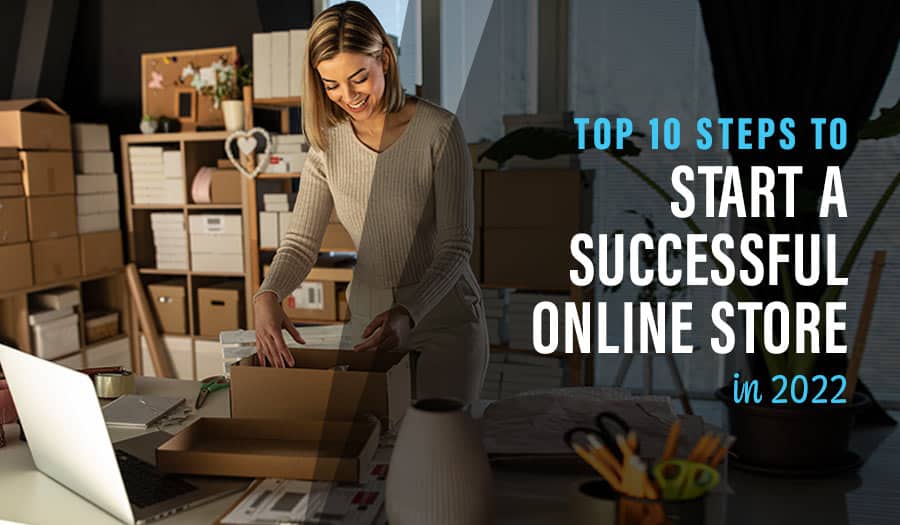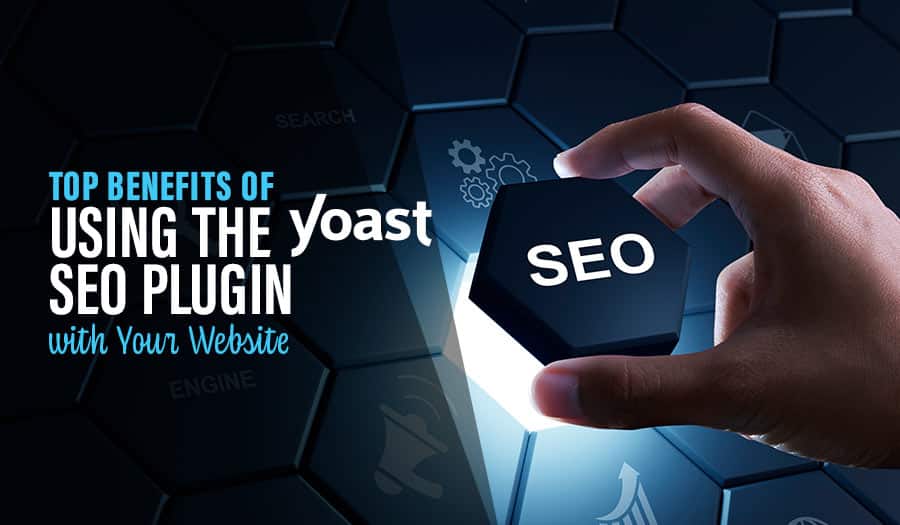In 2022, becoming your own e-commerce retailer has never been easier. If you want an online store, it’s really quite simple to build one, secure a supplier, and start advertising. Of course, the website doesn’t exactly build itself, and you’ll still need to supply all the unique brand experience and selling points to bring in customers, but the tools are all there waiting to be used. Let’s go through our Top 10 Steps to Start a Successful Online Store in 2022.
Here at Pixel Fish, we know everything there is to know about opening a web store, whether you’re selling crocheted hats, hand-built computers, home-catered cookies, or retailing your favourite fashion finds. We can even help you open an online store to book local services. Let’s dive into how any entrepreneur can start opening a successful online store in 2022.
Top 10 Steps to Start a Successful Online Store in 2022
- Build Your Inventory, Business Model, and Brand
- Register Your Business Name, Get an ABN & Open a Business Bank Account
- Establish a Domain Name and Web Server
- Set Up Your ECommerce Website Software
- Brand and Customise the Website Design
- Secure a Supplier and Build an Inventory
- Populate Your Website with Products
- Write a Killer About Page and FAQ Guide
- Fine-Tune Performance and Cybersecurity
- Write a Few Seed Articles for Your Blog
Top 10 Steps to Start a Successful Online Store in 2022
1. Build Your Inventory, Business Model, and Brand
The first step is to have a plan. You don’t need us to tell you the importance of designing a brand and establishing a stable business model before you start buying inventory and selling to customers.
Start with your business concept. Define your industry, niche, and brand personality you want to share. Then give your brand a name and design the brand assets like your colour palette, logo, letterheads, icons, and the page assets you’ll use to make the website into a friendly branded experience.
Then determine exactly what will be in your inventory and calculate the costs of keeping an inventory or ordering on-demand.
2. Register Your Business Name, Get an ABN & Open a Business Bank Account
Now you’re ready to get official. Register your business name with ASIC. A business name is the name your business operates under. You must register a business name if you conduct business under a name other than yours. You should also apply for an ABN The ABN is a unique 11-digit number that identifies your business or organisation to the government and community.
Then open a business bank account with your ABN to handle all your store finances. You may want to link this account to a business credit card for purchases and a Paypal account to smooth over online transactions.
3. Establish a Domain Name and Web Server
Now you’re ready to start building your web store. Choose a domain name based on your business name. Try to choose something memorable and easy to spell – that is clear when seen without spaces or capitalisation. Search through a platform that sells domains like GoDaddy or HostGator to purchase an unclaimed, affordable, catchy domain that fits your brand.
Once you have a domain, buy a web server from a hosting company. This can be Azure, DigitalOcean, HostGator, or even Amazon through AWS. All you need is a server that can handle website software with a public IP address reachable by the world wide web.
Follow the platform instructions using CloudFlare to connect your server to your domain name so that anyone searching for your website reaches the server.
4. Set Up Your ECommerce Website Software
Now, choose your e-commerce software and build your web store. Many web store software options exist, including Shopify, Square, Wix, etc. However, by far the most popular choice on the internet is the pairing of a WordPress website foundation with a Woo-Commerce plugin that transforms the basic WordPress structure into a full-featured web store.
5. Brand and Customise the Website Design
Once your web store is installed onto your live server, you can take your time branding and customising the website design. Change the colour palette to your brand’s colours with a complimentary theme that makes everything come together beautifully. Add your log to the logo space and your icon to the favicon (tab icon) option. Now is also a good time to set up page templates for things like product pages and blog articles.
Spend time tweaking and improving the website design until you have created your desired brand experience. Then check it out on mobile and make sure the pages load correctly through your phone and tablet as well.
6. Secure a Supplier and Build an Inventory
Now you’re ready to stock up. Online stores vary wildly in their product selection and how they choose to handle inventory. Make your plans now. Start reaching out to build partnerships if you need to secure supplier and vendor relationships to fulfil orders. If you plan to hand-make custom orders, look for bulk and vendor discounts on your supplies. If you plan to drop-ship, ensure your drop-shipping partners are lined up, and you know your timeline and costs.
Build your inventory and set your prices based on the research and network-building you do in this phase.
7. Populate Your Website with Products
With your inventory prepared, it’s time to populate your website with products. Use the e-commerce back-end tools to create as many product categories and individual product pages as you need. Customise each one with photos and descriptions to inspire new buyers. Consider landing pages for product categories and tagged attributes to make products easier to filter and search for. Use e-commerce best practices and templates to make each product page appealing and functional.
8. Write a Killer About Page and FAQ Guide
Of course, there are a few details every customer will look for on a legitimate webs store site. This includes your About page, Service pages (if any), a Contact page, and a FAQ or Support page. Fill these out with personality and details that will make your customers smile and leave them with useful answers.
You may also want to take this time to ensure your website footer is populated with a site map and your NAP (name, address phone) block, as this is where customers will look.
9. Fine-Tune Performance and Cybersecurity
To create a successful online store, you’re also going to need a little technical fine-tuning. First, ensure your cybersecurity measures are up to web store industry standards. Use trusted plugins and ensure each security feature is tailored to your website – and never left on the default settings or with default passwords.
Then hone your page-load-speed and other elements of a performance. A fast-performing and responsive website is necessary to appear on Google search results.
10. Write a Few Seed Articles for Your Blog
As you prepare to launch, take a little time to write some interesting and enthusiastically welcoming seed articles for your blog. While you may release regular blog updates, having three to ten blogs already written when your website opens gives you a “stocked shelves” instead of an “empty store” feel – and gives your brand new customers some content to peruse while they fall in love with your brand. Use your blogs to create compelling, fun, interesting, and authority-building content that will show up on inbound marketing searches and delight potential new customers with your brand’s personality and supply.
Start Advertising
Finally, you are ready to get out there and advertise! With a hand-built online store, branded and stocked with products, the only thing you need now is customers.
Build Your Online Store with Pixel Fish
If this sounds great, but you don’t consider yourself a web admin or brand designer, you don’t have to be! With expert teams like Pixel Fish ready to take on the technical and even creative tasks of opening a web store, all you need is a great idea and supply of products that your future customers will love. Contact us today, and we’ll help you build your new online store from the ground up.
Take your online store business to the next level with a Pixel Fish Ecommerce Website.
Check out some of our latest Ecommerce Website Design projects.
More Reading
Pixel Fish Hosting, Support & Maintenance
Is your WordPress Hacked? Here are 5 Potential Reasons
10 WordPress Plugins to Speed Up Your Ecommerce Website
Top 3 Ecommerce Customer Service Tactics for your Website
9 Reasons to Use WordPress for Your E-Commerce Website
E-commerce review: WooCommerce vs. Shopify: Which is Right For You?
The Real Reasons Why eCommerce Businesses Fail
Setting up for online success: Goal setting for Online Stores
Email Marketing Tips: 5 ways to Craft the Perfect Message for your business
WordPress.org vs WordPress.com: Which one should you use?
6 Steps to Writing Simple and Effective Website Content
5 Tips to Build a Successful Professional Services Website
3 Major Ecommerce Business Fears and how to resolve them
The Ugly Truth: What Your Website Says About Your Business
Business Website vs Social Media Profile Page: Which is Right for You?
5 Types of E-Commerce Website Shoppers & How to Win Them Over
Convert Your Retail Business Into Ecommerce: Top 10 Reasons
12 Steps to Shift Your Business to an Online Delivery Model Business
How to Run a Successful Business WordPress Website
Comprehensive Guide to Ecommerce Web Design
Top 9 Benefits of WordPress Web Design: Opening up on Open Source
Top 10 Tips For A Successful Ecommerce Website Business



